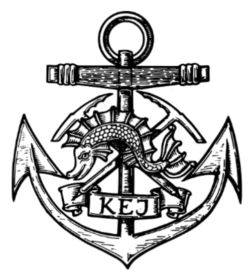When people think of great British institutions, Ordnance Survey (OS) has to be one of those that first springs to mind. It is one of the largest producers of maps in the world, barely any other countries are mapped as extensively as the UK and we have all seen them, with their very distinctive colours and design.
I grew up using OS maps. As a young Sea Cadet on Duke of Edinburgh expeditions, Ten Tors and area Expedition Training competitions, and now in training for heading off to Kilimanjaro later this week. When I was invited to spend the day with them last Friday, I seized the opportunity. A relative of mine used to work there, and it has always seemed something of a mystery to me, as if it were some kind of top secret building, so to be able to visit the office I drive past on every trip to Southampton was very exciting!

The History of Ordnance Survey
|
|
The Ordnance Survey originated in 1746, after the Jacobite rising in Scotland. The Duke of Cumberland required a map of the Scottish Highlands and did not have one. The next year an army officer proposed a map of the Highlands in order to bring the Scottish clans under control. A military survey of the Highlands was undertaken.In 1801 the first one inch to the mile map was created. The entire one inch to the mile map range was finished by 1891.The Ordnance Geological Survey, now the British Geological Survey, was created in 1835. In 1841, The Ordnance Survey was moved from its HQ in the Tower of London to Southampton (where the courts are now) In WWI and WWII, The Ordnance Survey was tasked with creating maps of France and Belgium, in order to assist with the war effort. In 1935, a triangulation of Great Britain was started, and the triangulation (trig) points we know and love today were built around the country. After the war and the bombing of Southampton, OS relocated to Maybush where it remained until 2011, when it moved to its current location. |
OS Apps
|
You can plan routes, use routes made by others and track as you walk as well, much like Strava and other apps. You can have access to any of the OS Maps you like and print out the parts you require, meaning that if you’re not one of those people who likes to take a huge map around, you don’t have to. The OS Locate app is great as well. This ‘converts GPS location readings from your mobile phone to Ordnance Survey National Grid references, enabling you to determine precisely where you are on any Ordnance Survey map.’ – OS. This doesn’t require a phone signal either, as it works off GPS. There is a compass as part of the app, which you can use along with your map, you can share where you are on social media, and there are tips and guides on how to read a map if you don’t know how to! |
|
A Day with OS
Myself and a number of the other #OutdoorBloggers group were invited along to OS last week. We arrived for 1000 on Friday and grabbed caffeine (the necessity for starting any day). After a few icebreakers and some very convincing truths and lies, we had a presentation on the Get Outside Champions – Read more here!
We were then taken on a tour of OS, where we met a number of people working in a variety of areas within the organisation. We saw how maps were created, how 3D mapping was completed and how the aerial photography process works for surveying the UK. I never knew half of this existed, and so it was absolutely fascinating to me to learn what happens daily at OS. We were able to spend some time with the surveying team as well, and I was entrusted with holding important equipment (eep!).
After the tour a number of the other bloggers went for a walk in the New Forest. Unfortunately, I had to head to Somerset for the weekend and Friday traffic meant I couldn’t go, but as it’s my stomping ground, I will be back there soon, I’m sure!



